

To kill a mockingbird - Historical reference. The History of Jim Crow - Part 2. The History of Jim Crow Laws - Part 1. Segregation in the southern USA (Jim Crow Laws period Photos) Race relations between the wars. Jim Crow Museum: Origins of Jim Crow. Jim Crow was the name of the racial caste system which operated primarily, but not exclusively in southern and border states, between 1877 and the mid-1960s.
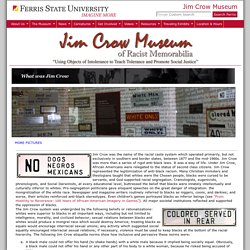
Jim Crow was more than a series of rigid anti-black laws. It was a way of life. Under Jim Crow, African Americans were relegated to the status of second class citizens. Jim Crow represented the legitimization of anti-black racism. Many Christian ministers and theologians taught that whites were the Chosen people, blacks were cursed to be servants, and God supported racial segregation.
A black male could not offer his hand (to shake hands) with a white male because it implied being socially equal. Stetson Kennedy, the author of Jim Crow Guide (1990), offered these simple rules that blacks were supposed to observe in conversing with whites: Never assert or even intimate that a white person is lying. Jim Crow etiquette operated in conjunction with Jim Crow laws (black codes).
The Rise and Fall of Jim Crow. Jim Crow Stories. Hard Time: From Alabama’s Past, Capitalism and Racism In a Cruel Partnership. July 16, 2001 — Till 1928, Companies ‘Leased’ Convicts, Most of Them Black and Many Doomed — Sent to the Mines for ‘Gaming’ — The Wall Street Journal By Douglas A.
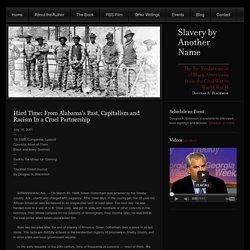
Blackmon BIRMINGHAM, Ala. — On March 30, 1908, Green Cottenham was arrested by the Shelby County, Ala., sheriff and charged with vagrancy. After three days in the county jail, the 22-year-old African-American was sentenced to an unspecified term of hard labor. The next day, he was handed over to a unit of U.S. Ku Klux Klan. In 1915, white Protestant nativists organized a revival of the Ku Klux Klan near Atlanta, Georgia, inspired by their romantic view of the Old South as well as Thomas Dixon’s 1905 book “The Clansman” and D.W.
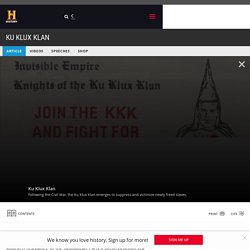
Griffith’s 1915 film “Birth of a Nation.” This second generation of the Klan was not only anti-black but also took a stand against Roman Catholics, Jews, foreigners and organized labor. It was fueled by growing hostility to the surge in immigration that America experienced in the early 20th century along with fears of communist revolution akin to the Bolshevik triumph in Russia in 1917. The organization took as its symbol a burning cross and held rallies, parades and marches around the country. At its peak in the 1920s, Klan membership exceeded 4 million people nationwide. The Martin Luther King Jr. Center for Nonviolent Social Change. During the less than 13 years of Dr.
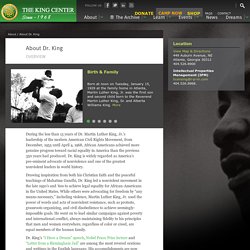
Martin Luther King, Jr.’s leadership of the modern American Civil Rights Movement, from December, 1955 until April 4, 1968, African Americans achieved more genuine progress toward racial equality in America than the previous 350 years had produced. Dr. King is widely regarded as America’s pre-eminent advocate of nonviolence and one of the greatest nonviolent leaders in world history.
Drawing inspiration from both his Christian faith and the peaceful teachings of Mahatma Gandhi, Dr. King led a nonviolent movement in the late 1950’s and ‘60s to achieve legal equality for African-Americans in the United States. Martin Luther King, Jr. A hero is born The home where King was born still stands today.

Segregation in the 1930s. Stock Footage - NEGRO CIVIL RIGHTS 1930s. Great Depression - A Short History of the Great Depression. Farm Life during the Great Depression. 1930s Farm Life The Great Depression changed the lives of people who lived and farmed on the Great Plains and in turn, changed America.
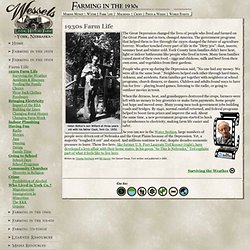
The government programs that helped them to live through the 1930s changed the future of agriculture forever. Weather touched every part of life in the "Dirty 30s": dust, insects, summer heat and winter cold. York County farm families didn't have heat, light or indoor bathrooms like people who lived in town. Many farm families raised most of their own food – eggs and chickens, milk and beef from their own cows, and vegetables from their gardens. People who grew up during the Depression said, "No one had any money. When the dryness, heat, and grasshoppers destroyed the crops, farmers were left with no money to buy groceries or make farm payments. About the same time, a new government program started to hook up farmhouses to electricity, making farm life easier and safer. Alabama Newspaper 1931.